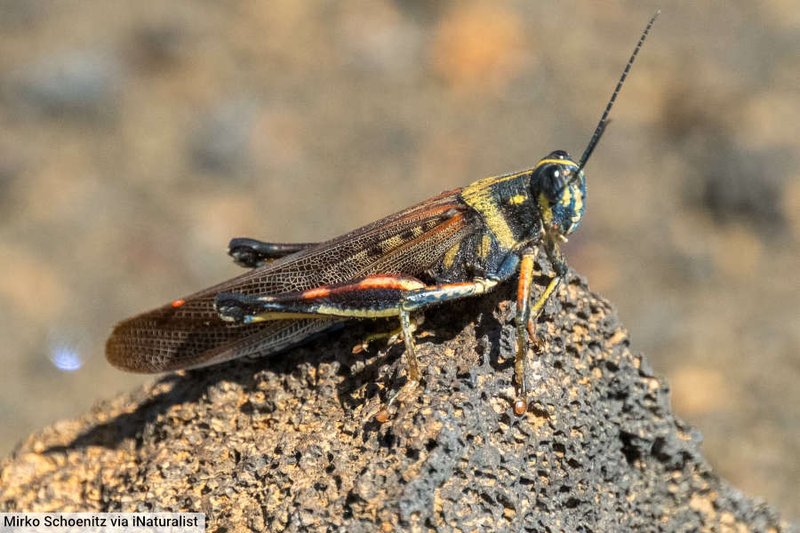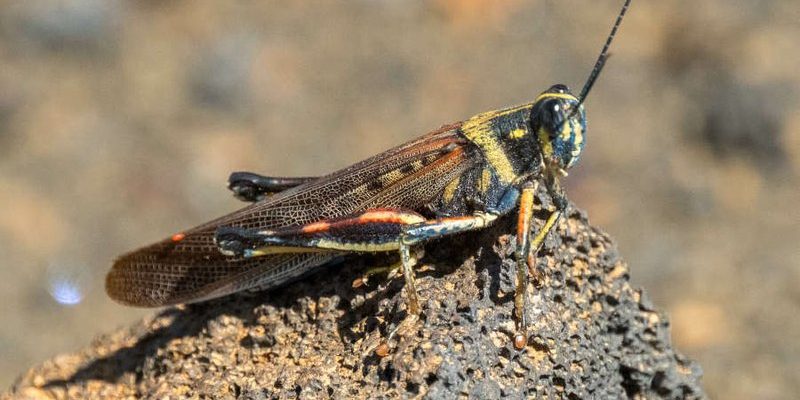
Their communication methods might not involve spoken words or hand signals, but they are surprisingly sophisticated. They use a mix of sound, touch, and even scent to relay information to their fellow locusts. Here’s the thing: understanding how locusts communicate can give us insights into their behavior and might even help in managing their swarms, which can be devastating to agriculture. So grab your coffee, and let’s dive into this fascinating world of locust interaction!
Understanding Locust Communication
Locusts communicate primarily through acoustic signals. These are sounds made by rubbing their wings and bodies together, a process called stridulation. When you hear locusts buzzing, they’re not just making random noise; they’re sending signals to other locusts. For example, male locusts might stridulate to attract females during mating season. It’s like a musical serenade, inviting potential partners to come closer.
The frequency and rhythm of these sounds can convey different messages. For instance, an urgent call might be a warning about danger, while a steady buzz could signal that food is nearby. It’s interesting to think about how these tiny creatures have their own language, adapting their sounds to communicate their needs and thoughts to the swarm.
What’s even more fascinating is that locusts don’t only rely on sounds. They also use chemical signals, known as pheromones, to communicate important information. For example, if a locust finds a particularly good food source, it might release a scent that guides others to the feast. This is similar to how ants leave trails to direct their friends to food.
How Locusts Interact in Swarms
Locusts are social insects, which means they thrive in groups. When they gather in a swarm, their interactions become even more complex. The swarm acts like a single organism, with each locust playing a role in the larger group. Swarming helps them find food more efficiently and avoid predators—safety in numbers, right?
The beauty of this interaction is that locusts can change their behavior in response to their environment. If conditions are right, like when food is abundant, locusts will swarm and reproduce. However, if they sense danger—perhaps a predator lurking nearby—they can quickly disperse. This ability to adapt to changing situations is a crucial survival tactic.
Locusts also display a behavior called collective decision-making. As a swarm, they can make choices about where to move or when to stop feeding based on the signals they receive from each other. It’s quite impressive, considering they’re just tiny insects! They seem to have a built-in GPS, navigating as a cohesive unit, which is essential for locating resources and avoiding threats.
The Role of Vision in Locust Interaction
While sounds and scents play a significant part in locust communication, their vision is equally important. Have you ever noticed how a group of birds flies in sync? Locusts do something similar, using their compound eyes to keep track of each other. This visual ability helps them avoid collisions and maintain formation while moving together.
Locusts use their vision to recognize fellow swarm members, which helps facilitate cooperation. If one locust spots food, it can signal others through movement and sound, creating a ripple effect. This visual cue is critical, especially in dense swarms where communication must be swift and clear. Otherwise, the chance of missing out on a meal or getting lost increases.
Interestingly, locusts are also sensitive to light changes. If the sun sets, for example, they may become more cautious and stay closer together as a protective measure against nighttime predators. So in a way, their sight not only aids in communication but plays a huge role in their safety.
How Environmental Factors Affect Locust Communication
Locusts are impacted by their environment in various ways. Factors like temperature, humidity, and even the presence of vegetation can alter how they communicate. For instance, when the weather is dry, locusts might become more aggressive and competitive for resources, which can change the tone of their interactions.
During drought conditions, when food supplies dwindle, locusts may rely more heavily on chemical signals to locate food sources. It’s like they’re sending out an SOS to others in the colony. In contrast, during lush, green conditions, their interactions might be more leisurely and communal, focusing on mating and reproduction.
Moreover, environmental disturbances like storms can also trigger different communication behaviors. After a storm, locusts might gather in a safe spot and communicate their need for food or shelter. You might say their communication adapts almost like a dance adjusting to the music of their surroundings, ensuring they thrive no matter the conditions.
Challenges in Studying Locust Behavior
Although we’ve learned a lot about how locusts communicate and interact, studying their behavior isn’t without challenges. One major hurdle is their tendency to swarm. When locusts gather in large numbers, it can be tough for researchers to observe individual behavior. The sheer scale of a swarm can make each locust’s actions almost indistinguishable from the others.
Moreover, understanding the nuances of their communication requires careful observation and sometimes advanced technology. Scientists often use microphones to capture locust sounds, which can then be analyzed to determine the types of messages being sent. This tech-savvy approach helps break down the complexities of their acoustic language.
Another challenge is the variable nature of locust behavior. Just like how people might act differently based on their mood or environment, locusts can change their interactions based on stress or resource availability. This variability makes it tricky to establish consistent patterns in their communication.
Why Understanding Locust Communication Matters
So, why does all this matter? Understanding how locusts communicate and interact can be helpful for various reasons, particularly in agriculture. When scientists can predict swarming behavior, they can alert farmers to take preventive measures. This knowledge can minimize the impact of locust swarms on crops, saving farmers time, money, and effort.
Additionally, by exploring the intricacies of locust communication, researchers can gain insights into social behavior in other species. Learning how a small insect manages to interact and cooperate in a swarm could shed light on how more complex creatures, like bees or even humans, communicate in groups.
In essence, studying locust interactions can inform better management practices and provide a clearer picture of how social insects function, allowing us to appreciate these creatures even more.
In conclusion, locusts might seem like simple pests, but their communication and interaction are remarkable. From their buzzing songs to the dances in the sky, there’s a whole world of connection happening among these insects. By understanding how they communicate, we can better manage their behavior and perhaps even learn a thing or two about our own social interactions. So, the next time you hear those buzzing sounds, remember: there’s a hidden conversation going on!

